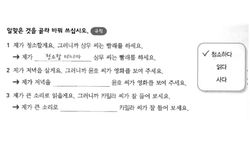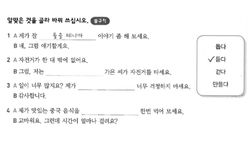Mar 11, 2022
Grammar -을 테니까(1)






-을 테니까(1)
Is used to express an intended action and then request something from the listener.
The speaker's will, intention or plan in the is expressed in the clause preceding -을 테니까. It means 'I intend to...., so.... / I promise to.... so....'.
Example:
🧑🦱: 제가 음료수 좀 가져갈까요?
Shall I bring the beverage?
🧑🦲: 음료수는 제가 살 테니까 그냥 오시면 돼요.
For the beverage i will be the one who buy it so you can just come.
-을 테니까 is used with verbs and 있다.
❕Restrictions on use❕
The subject is mostly the first person (the speaker "I").
-을 테니까 is followed by imperative -으세요, -아/어 주세요, etc or a propositive -읍시다, -을까요?, -는 게 어때요?, etc form.
➡️ (제가) 파티 장소를 예약할 테니까 민희 씨가 다른 사람에게 연락을 좀 해 주세요.
I am going to reserve the party venue so minhee, please contact someone else.
📝 NOTE 📝
When asking someone to do something, such as 'I will do this work so you do that work.' -을 테니까 sounds natural.
However, if you use -을 테니까 in the case of something not done together, it can hurt the other people's feelings. Thus, it would be better to use '-고 싶은데', '-으려고 하는데', when asking people to do something.
🧑🦱: 내가 오늘 이 책을 읽을 테니까 좀 빌려 주세요.
I will read this book so lend me the book, please.
🧑🦲: ..... 😡
Recommended option
🧑🦱: 내가 오늘 이 책을 읽고 싶은데 좀 빌려 주세요. ✅
🧑🦱: 내가 오늘 이 책을 읽으려고 하는데 좀 빌려 줄 수 있어요? ✅